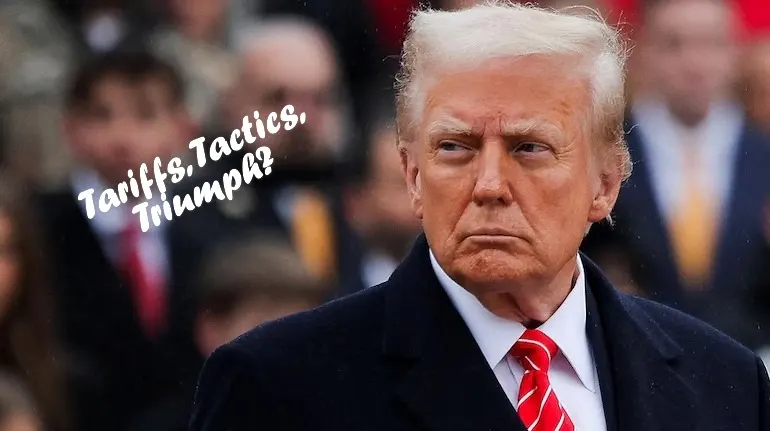Trump Signals End of China Tariffs: What It Means for Trade and the Economy
The end of China tariffs may be closer than ever. In a surprising shift, former President Donald Trump has recently suggested that the prolonged tariff war with China could soon wrap up. After years of economic tit-for-tat, the possibility of lifting import duties has raised eyebrows in both Washington and Beijing.
If these signals translate into policy, the end of China tariffs could have massive implications for global trade, inflation, consumer pricing, and the upcoming 2025 U.S. presidential election.
Trump’s New Tone on Tariffs
In a recent speech, Trump hinted that maintaining harsh tariffs on Chinese goods might no longer be in America’s best interest. His comments suggested that while tariffs served a strategic purpose in the past, evolving global conditions and inflation concerns could justify reevaluation.

This shift in approach marks a departure from Trump’s earlier “America First” stance, and many are now questioning whether the end of China tariffs could be a real possibility in the near term.
A Brief Timeline of the U.S.-China Tariff War
Since 2018, Trump’s trade policies have added up to over $350 billion in tariffs on Chinese imports. These measures triggered a wave of retaliatory actions from China, sparking a trade war that affected everything from soybeans to semiconductors.
The Biden administration maintained most of these tariffs but began slow evaluations of their economic impact. Now, Trump’s latest remarks may hint at a strategic pivot—potentially leading to the end of Trump China tariffs as we know them.
Economic Implications of a Tariff Rollback
If Trump follows through on this new direction, the end of Trump China tariffs could help:
- Lower consumer prices by reducing import costs
- Boost e-commerce platforms like Shein and Temu that were hit by recent changes to the de minimis rule
- Ease inflation, giving U.S. consumers relief after years of rising prices
- Improve global supply chains, especially for electronics, apparel, and household goods
Small businesses reliant on overseas manufacturing would benefit significantly from reduced duties and smoother import processes.
Mixed Reactions Across Industries
Despite the positive signals, Trump’s change in tone hasn’t been universally welcomed. Manufacturing lobbyists warn that lifting tariffs could harm American factories and reverse progress made on domestic production. Others argue that it weakens U.S. leverage in negotiations with China over intellectual property and technology.
Still, Wall Street and global investors have largely welcomed the possibility of the end of China tariffs, with markets responding positively to even hints of easing trade tensions.
What Comes Next?
Although no official rollback has been announced, many analysts believe Trump is laying the groundwork for a policy shift that may come either during his campaign or potential second term.
Here’s what to watch for:
- Formal statements from Trump’s campaign outlining trade policy
- China’s diplomatic response
- Shifts in retail pricing and global commodity trends
The end of Trump China tariffs would likely be rolled out in phases, possibly starting with consumer goods and later expanding to industrial imports.
Conclusion: Is the Trade War Finally Ending?
After years of escalating tensions, tariffs, and economic uncertainty, the end of China tariffs might finally be on the horizon. Whether this change is driven by politics, inflation pressure, or global strategy, the world is paying close attention.
One thing’s for sure—if these tariffs are lifted, we could be entering a new era of trade diplomacy between two of the world’s largest economies.
Also Read
Insights by Saurabh Mukherjea: How Rupee Depreciation Can Be India’s Shield Against Chinese Dumping
U.S. and China Agree to Temporarily Slash Tariffs in Bid to Defuse Trade War

Add a Comment